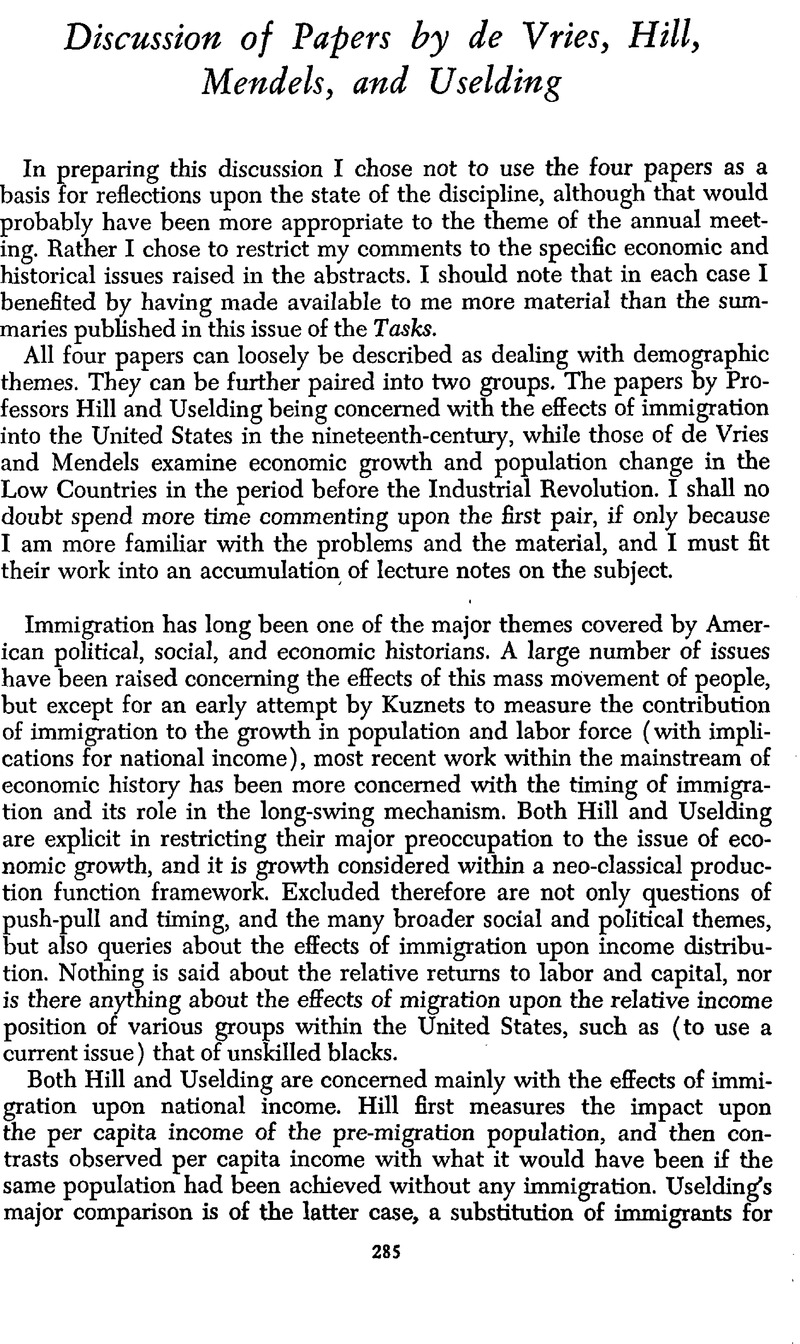No CrossRef data available.
Article contents
Discussion of Papers by de Vries, Hill, Mendels, and Uselding
Published online by Cambridge University Press: 11 May 2010
Abstract

- Type
- Summaries of Doctoral Dissertations
- Information
- Copyright
- Copyright © The Economic History Association 1971
References
1 Payne, Peter L. and Davis, Lance E., The Savings Bank of Baltimore, 1818–1866: A Historical and Analytical Study (Baltimore, 1956)Google Scholar; Davis, and Payne, , “From Benevolence to Business: The Story of Two Savings Banks,” Business History Review, XXXII (Winter 1958), pp. 386–406CrossRefGoogle Scholar.
2 Ohlin, B., Interregional and International Trade (Cambridge, Mass., 1933)Google Scholar; Stolper, W. F. and Samuelson, Paul A., “Protection and Real Wages,” Review of Economic Studies, IX (1941), pp. 58–73CrossRefGoogle Scholar; Metzler, Lloyd A., “Tariffs, the Terms of Trade, and the Distribution of National Income,” Journal of Political Economy, LVII (1949), pp. 1–29CrossRefGoogle Scholar.
3 Easterlin, Richard A., “Interregional Differences in Per Capita Income, Population, and Total Income, 1940–1950,” Trends in The American Economy in the Nineteenth Century (Princeton, 1960), pp. 73–140Google Scholar.
4 Paul A. David's work parallels Pope's and raises some additional questions concerning effects. David contends that the tariff's effect on technical efficiency in manufacturing was “largely redundant;” therefore, it can only be viewed as “a means of redistributing income in favor of the cotton textile producers.” “Learning by Doing and Tariff Protection: A Reconsideration of the Case of the Ante-Bellum United States Cotton Textile Industry,” The Journal of Economic History, XXX (September 1970), p. 600Google Scholar. Pope might agree that the distribution favored textile rather than cotton producers but would argue that the Southern economy was not abused in the process.
5 Doane, David P., “Regional Structure of the Cotton Textile Industry, 1880 to 1900” (Dissertation in Economics, Purdue University, 1969. Ann Arbor, University Microfilms Order No. 70–8883, 1970)Google Scholar.




